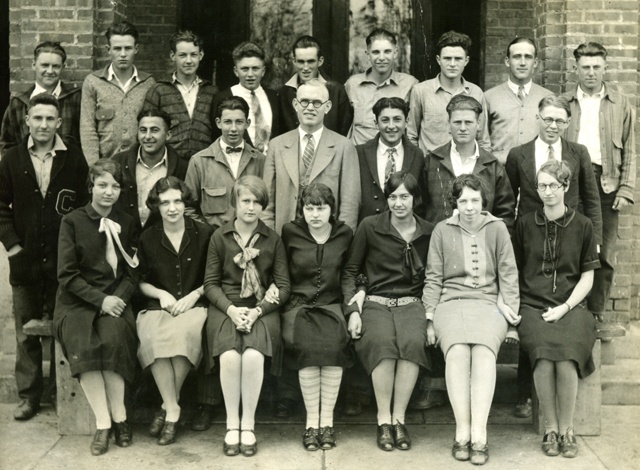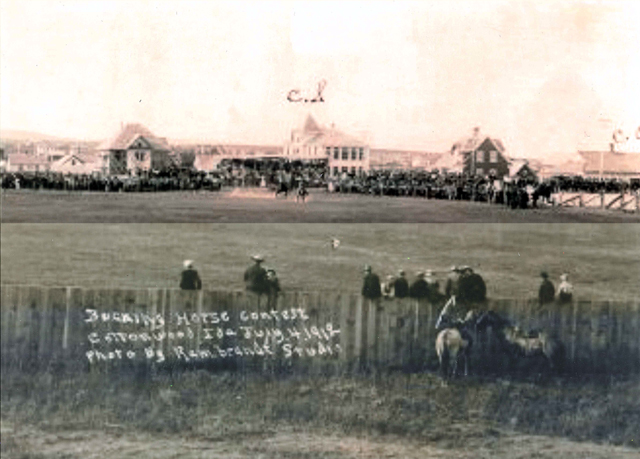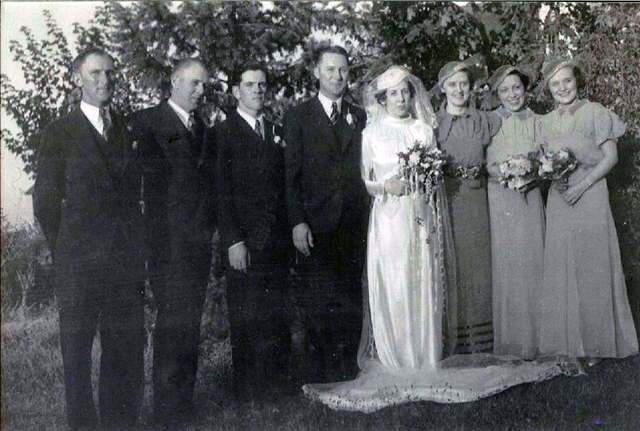| Cottonwood
to celebrate 150th year in 2012, area history included
(Cottonwood history continued from last week) One of the more interesting things in going over our history is how the old sayings “come home to roost.” The two most likely things to start an old-fashioned donnybrook were the subjects of politics and religion. And this, over the last 150 years, doesn’t seem to change much. Coming of the public pres only seemed to keep these feuds alive and on-going. Every time something was written about one of the community leaders it was made known “He is a staunch Republican (or Democrat) and remains firm in his convictions.” This party affiliation seemed to make more or less difference when hard times came knocking at the door. We had a year or two of good years mixed in with a few moderate years, and then those years that were mostly bad. In about 1917 the people thought that if we took liquor out of the mix things would improve – so in 1918 the Volstead Act took hold with the passage of the 18th amendment. In the big cities like New York it opened 10 to 30 thousand speakeasys! The poor and unemployed stayed that way. Here, out on the frontier, people just learned to live with it and it really made very little difference. These folks never used much store-bought liquor – they, like always used the homemade and times that called for drink got it from a fruit jar instead of store-bought. Most dances had a “gunny-sack peddler” by the back door. And at weddings and family occasions “Grandma’s recipe” was served in a coffee cup. Just like any other period in history, the young people were restricted by their method of transportation. Enough about social life. – Let’s discuss a couple other things that did affect us all. The times were tough and so were the people. Mom too on extra duties and dad reached out to find extra work wherever he could find it. What are we talking about? I’ll tell you. Dad would be out in the barn feeding and grooming the horses. Mom would by another light, be firing the stove, dressing the kids and making breakfast. By daylight Dad would be gone with the horses, 2, 4 or 6, to the field or out on a road job, and Mom would clean the kitchen, take one or more of the kids on her hip and go our and feed or milk the other animals. Then came lunch hour and sometimes, if distance permitted, Dad would return to groom and rest the horses for 1½ to 2 hours. Then off again! Mom would do some cleaning and laundry by hand and then start the main meal-evening supper. Dad, if not out on a job with a bedroll, would come in and take care of the horses and do evening chores. By the time all was done that needed done, it was bed time-prayer time-time to sleep! Sometimes all this was not enough. This is where politics comes in. Men like Hoover and Roosevelt had all kinds of plans to take the kick out of the depression. The talk of the New Deal included programs like the C.C.C. (Civilian Conservation Corps) which would do the jobs regular people couldn’t do for themselves. This was supposed to be for just 18 to 28 year olds but with the bigger projects more support people had to be hired along with horses, etc. The young people got about $1 per day up to $75 per month max. One of the old-timers told me that his horses made more per animal than the men who drove them did. Many of the roads in this area, including, in 1933, the road down Grave’s Creek to the Salmon River, were built by the C.C.C. The Soldier’s Meadow Reservoir was built by another hard times program after World War I. This eventually gave up another way to Lewiston, The Webb Ridge Road. Let’s look at a couple of these programs that did work. (Pay attention Obama!) The C.C.C. was designed to provide employment for young men in relief families who had difficulty finding jobs in hard times while at the same time implementing our natural resources in every state in the Union. Maximum enrollment over the 9 years was 300,000 men at one time and in 9 years 2.5 million men participated. The best part of all, after it was over in 1942, the places these men worked were vastly improved for every American both then and in years to come. The W.P.A. (Works Progress Administration) left its mark also in every state in the Union building may miles of roads here and everywhere in the U.S. It also built many miles of sidewalks of which many still carry the [WPA 1935] brand. One of the main differences was local government bore 10 to 30% of the costs but also decided where the work was needed most. In this program $11.4 billion total was spent. Both local and national critics of these programs offered no better solutions. These days of work and strife were no different then than they are now. “You get out as much as you put in.” (Convert that to German language and it sounds mighty American both then and now!) Like any government programs, these were criticized by some but by and large were programs that many people benefited from! 
Shown is the 1929 Cottonwood High School graduating class. Can you help identify the people in the photo? 
This photo was taken from the present day hospital location looking north. This lot is where the former Prairie Elementary School is now. The 2-story at the left is where the hospital started. The 2-story in the center is the then new St. Joseph’s grade school. The 2-story to the right is the old W.W. Flint home. 
Good times with hard times. Shown is the wedding party for Clarence Mathias Seubert and Ann Margaret Jenny at the J.F. Jenny Ranch Sept. 29, 1936. From left are Andrew Seubert (brother), Hank Seubert (cousin) Tony Seubert (cousin), Clarence and Ann, Verona Theil (Mrs. Frank) Jenny, Alvina Kopczynski Wimer and Maime Skoke Johnson (nursing school friend. Remember When Remember when… Dr. W.F. Orr had office calls in the old Community Hall on Broadway? (Dr. Richard Orr once remarked that he was born just off the library room in the old hall.) The basketball games were held in the old wood gym at Greencreek? Remember the last prom dance you went to in Greencreek? In Ferdinand? The Academy Prom in the K of C. Hall in Cottonwood? How many times you were glad and proud to be an American? Thank a Veteran for some of that-Happy Veterans Day! The response to this 150-year program has been great! The list of people who want to participate keeps growing day by day. According to the report at the committee meeting last Thursday we had contact with about 44 more names who wanted to be included. The next meeting is scheduled for December 1st at 2 p.m. at the library. If you wonder about some of your local organizations being included, contact us for turning in the history and story. Remember all the fund drives for church, school and civic improvements? Look around and count the ways our lives have been changed because someone took on the job of “getting it done!” Remember the last time you heard of an improvement project with a “grant?” History submission outline The 150 year committee has developed an outline for the family and business histories to help you get started. For Family (optional) 1. First ancestors to come to the county. 2. Father, mother and their children 3. When/date and where they were born 4. Where they grew up and what school they went to 5. Where they lived 6. Who they married, when and where. 7. History, what they did/occupation, memories, stories For Business (optional) 1. Name 2. When/date it was started 3. Location it was started at 4. Main attraction 5. People who ran it The committee would like to have these submitted by January 5, 2012. Photos are also welcome and can be scanned at the Cottonwood Chronicle. These will be compiled into a book (possibly 2 volumes) that will be made available for sale. You can email your stories to 150yearstory@gmail.com |
|